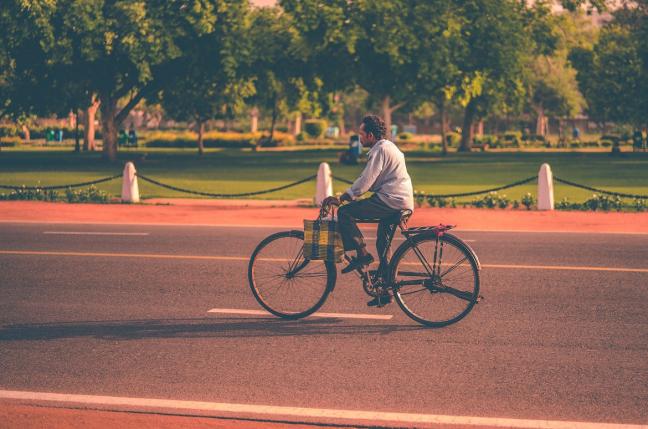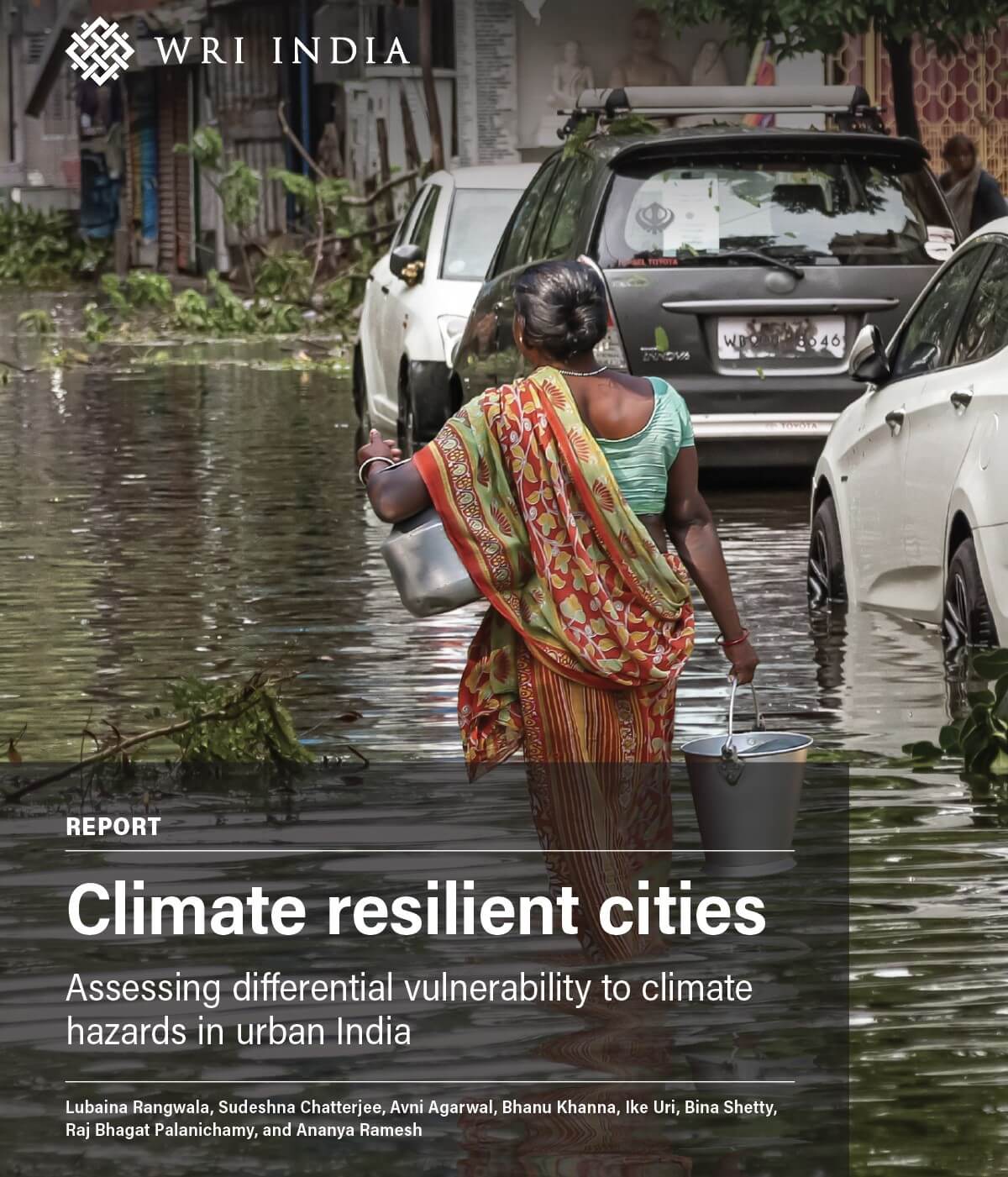Moving from compulsion to choice: Ways to retain Cycling as the forever normal
by and -
The impossible has already happened and slowly, it is becoming the new normal. With cases of COVID-19 reaching 4 million mark in India, cities continue averting public transport and big investment project like metros and monorails. Also, public spaces are closed to citizens and recreational activities are becoming prey to social distancing norms, affecting a common urban commuter. Amid this all, there is one ray of hope. The pandemic has resurrected cycling. With social distancing becoming the new norm, cycling seems to be the one stop mobility solution for all commute troubles. Though India has had an age-old tradition of cycling, in the last few decades with the advent of motorization it has undergone a decline. Under the current norms, urban cycling is gaining popularity sheerly out of necessity and begs the question: Is this surge temporary? Would we go back to the “old normal” once our spatial inhibitions are lifted?
The challenge to mainstream cycling in Indian cities is not new, but the pandemic has given the opportunity to convert this temporary surge in cycling to a sustained new normal. WRI India’s July 28 webinar on How Cities can Build Back Better in the New Normal with Cycling, first of the many upcoming discussions on #PedalKaro, set the context for ongoing challenges around cycling and tried to zero down to the major problems associated with it. The webinar’s panel comprised Maud de Vries (Co-Founder and Managing Director, BYCS, Amsterdam), Carlosfelipe Pardo (Senior Manager, City Pilots, New Urban Mobility Alliance), Rutul Joshi (Associate Professor, CEPT University, Ahmedabad) and Dr. Bhairavi Naik Joshi (Director and CEO, BYCS India Foundation) and was moderated by Amit Bhatt (Executive Director - Integrated Transport at WRI India).
Following are the six broad points that emerged from the conversation:
Modifications in Urban planning and Development Control Regulations: Growth pattern of Indian cities is characterized by proliferation, leading to sprawls, which is further accompanied by disjointed road infrastructure. Change in urban planning legislation to promote planned redevelopment and peripheral land augmentation needs to be taken up by states. This would ensure singular mode travel and better connectivity. Similarly, reforms pertaining to Development Controls Regulations related to streets and buildings have indirect impact on the cyclists and pedestrians. Granularity is mostly ignored in street design process and absence of inactive building facades creates an isolated experience. Opportunities to observe other people is something that incentivizes the walker and cyclists to move through the environment.
Policy and Welfare Schemes: Transportation policies must support a socio-cultural shift towards cycling. Absence of narratives on cycling policies in the larger development discourse has led to cycling missing out on a clear stratagem. Welfare schemes for gender parity, support to people from the lower economic classes and financial incentive driven schemes for recreational cyclists can play a crucial role in beguiling varying target population towards regular usage of cycle. Some tried and tested initiatives by state governments like Saraswati Cycle Yojana, Sabboj Sathi and Bicycle to Girls have been instrumental in protecting the rights of education for young girls. Similarly, schemes like Cycle to Work and Cycling Kilometric Allowance encourages the employees to cycle to their workplaces. Also, policy driven initiatives to discourage hectoring of motorized vehicle users, through cycle friendly parking regulations and taxations is needed immediately.
Equitable mode of commute: Indian cities are dynamic in nature, with varying road users. The cycling community witnesses vast variations of users with uneven distribution across genders, age groups and economic classes. Presently, the captive users comprise of gendered livelihood based cyclists, who belong to the lower economic strata and are lost in the city’s bigger picture. Women cyclists are mostly confined to recreational cycling and invisible in the livelihood section. Similarly, a diminishing spectrum of surviving cyclists are school going children. With the increase in crashes related to cycling of children, the mode has been labeled as unsafe. It is time to include the needs and preferences of under-represented groups to make cycle a mode for all.
Frontline Advocacy: Coordinated volunteer efforts can have significant results when focused locally. Similarly, effective advocacy can play a pivotal role in bringing together different stakeholders, maximizing their efforts, and increasing the outreach. In this regard an Amsterdam-based social enterprise named BYCS, has been working on focused advocacy programs in more than 100 cities globally. One of the programs is to work with cycling advocacy champions (Bicycle Mayors) from different cities. Recently, BYCS Amsterdam decentralized their global program through BYCS India Foundation. Through these efforts the focus is to bring together different stakeholders to initiate and scale ideas around cycling. This is particularly important to tie the efforts together for maximized and sustainable impact.
Contextualizing global best practices and learning from developed countries: Investing in bicycle infrastructure and bicycle supporting street design is quintessential. With a sea of infrastructural and design options, tried and tested in developed countries, Indian cities simply need to contextualize them based on local conditions like weather, user type, urban and street attributes. Adaptable and evidenced-based design strategy via tactical urbanism are the initial stepping stones, which needs to be bodied forth by permanent solutions, for best outcome. Apart from developed countries, cities from developing countries like Bogota have revitalized cycling, with the share of cycling trips increasing 10-fold in two decades. Many Latin American countries, which share similarity in mobility pattern with Indian cities are good examples to look up to for learnings.
New dialogue for better outreach: Conversation style to onboard new cyclists and retain the existing cyclists needs a paradigm shift. The universal message to increase the mode share of cycling can be supplemented by segmented narratives for specific groups. For example, an image of alternative lifestyle and cycling being the #newcool can work for recreational and young cyclists whereas comfort and safety-oriented experience can be the dialogue to retain captive users. Cycle manufacturing industry also play a vital role in enticing the potential cyclists. From addressing the key obstacles of age, distance, trip purpose, etc., through usage and user-based cycle models (for e.g. cargo cycles, pedal assisted e-bikes, tricycles, etc.) to revival of cycle campaigns and advertisements, all play an additive role in expanding the cycle market.
The re-emergence of Urban Cycling due to COVID-19 is a blessing in disguise and Indian cities should consider on plans to do away with skewed perceptions and make bigger investments to make this new normal, sustainable. There is also an opportunity for cycling advocates to model more inclusive forms of cycling development. It is long overdue to listen to residents – all groups of them – when redesigning city mobility. What we majorly lack is One Collective Voice, which is essentially the human infrastructure of cycling. An organized, cycling advocating group comprising of different local support groups, international think tanks and manufacturing industry, that presents a clear request and makes the case for achievable goals with broad benefits to the community is hard for an elected official to ignore. A collective effort to bring a change from #PedalbyCompulsion to #PedalbyChoice is need of the hour.


